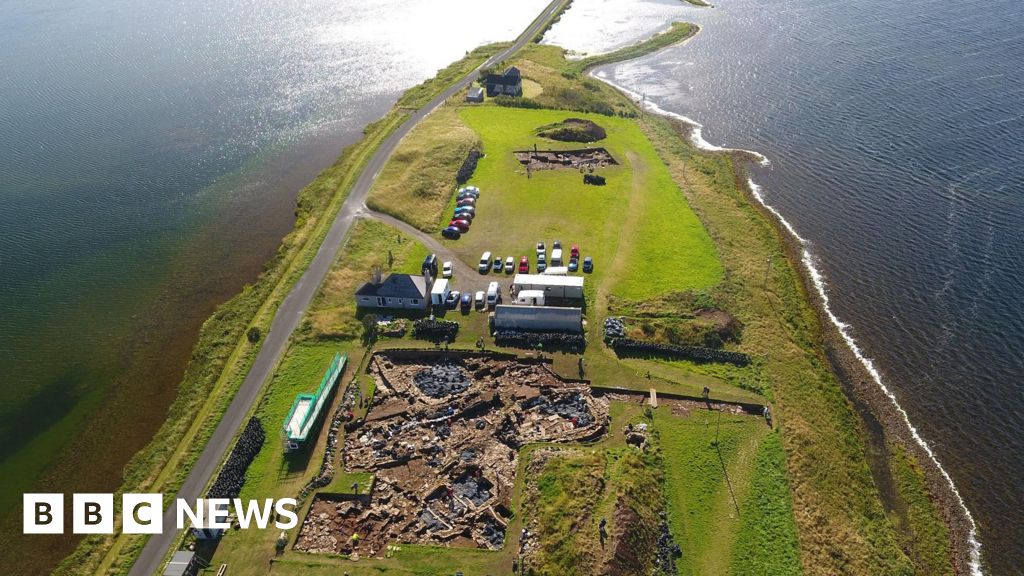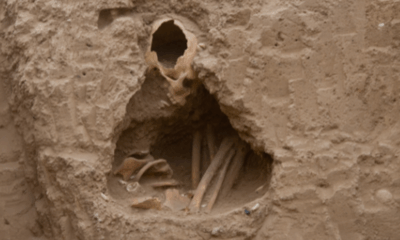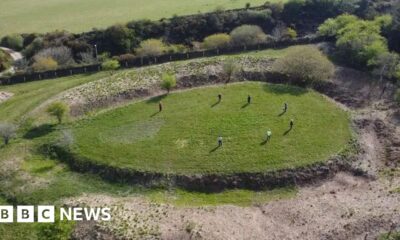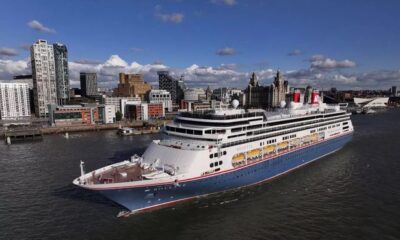Science
Archaeologists Uncover Mysterious Object at Ness of Brodgar Site

Archaeologists are set to resume excavation work at the Ness of Brodgar in Orkney following a groundbreaking discovery made using advanced 3D radar technology. This technology unveiled an unidentified object, prompting further investigation at one of the most significant Neolithic sites in the British Isles. The excavation site, which has seen two decades of work, officially concluded in 2024, but new findings have reignited interest among researchers.
During the initial excavations, which began in 2004, archaeologists uncovered a remarkable array of structures—approximately 40 buildings that suggest a major settlement existed in prehistoric Orkney. The latest phase of work utilized Ground Penetrating Radar (GPR) for the first time at this site, generating three-dimensional images that revealed unexpected elements. The lead excavation team described the new discovery as “totally dissimilar to anything else we’ve uncovered,” sparking excitement about its potential implications.
Exploring the Anomaly
Archaeologist Nick Card, who has been involved in the project since its inception, indicated that this new object may significantly alter the historical narrative of the Ness. He emphasized that the anomaly appears to be located in an area devoid of deeper archaeological layers, suggesting that it does not belong to the Neolithic period. “We think this is so unusual that it could add a new chapter to the history of the Ness,” Card explained during an interview with BBC’s Radio Scotland Breakfast programme.
The Ness of Brodgar, located just south-east of the iconic Ring of Brodgar, is often regarded as unparalleled in Atlantic Europe. The structures already identified at the site date back to between 3,500 BC and 2,400 BC, providing a rich context for understanding the region’s prehistoric culture.
Funding for the latest excavation efforts is provided by Time Team, which plans to produce a new program featuring the site next year. Card described the upcoming work as akin to “keyhole surgery,” where a small trench will be opened to further investigate the newly found anomaly. He noted that the initial results from the GPR scans have been “amazing,” but further analysis is necessary to fully understand the implications of this discovery.
Public Engagement and Future Plans
The upcoming excavation will allow for public engagement, with the site open for visitors during a four-week period in July 2026. Despite the excitement surrounding the new discovery, previously uncovered buildings will remain covered for preservation purposes.
The innovative use of GPR at the Ness marks a significant advancement in archaeological methods within Scotland. As researchers work to stitch together data from the scans, they aim to create comprehensive 3D models of the site, enhancing understanding of its historical development. The anticipation surrounding this discovery not only highlights the ongoing importance of the Ness of Brodgar but also underscores the potential for new insights into Neolithic life in Orkney.
-

 Entertainment3 months ago
Entertainment3 months agoAnn Ming Reflects on ITV’s ‘I Fought the Law’ Drama
-

 Entertainment4 months ago
Entertainment4 months agoKate Garraway Sells £2 Million Home Amid Financial Struggles
-

 Health3 months ago
Health3 months agoKatie Price Faces New Health Concerns After Cancer Symptoms Resurface
-

 Entertainment3 months ago
Entertainment3 months agoCoronation Street’s Carl Webster Faces Trouble with New Affairs
-

 Entertainment3 months ago
Entertainment3 months agoWhere is Tinder Swindler Simon Leviev? Latest Updates Revealed
-

 Entertainment4 months ago
Entertainment4 months agoMarkiplier Addresses AI Controversy During Livestream Response
-

 Science1 month ago
Science1 month agoBrian Cox Addresses Claims of Alien Probe in 3I/ATLAS Discovery
-

 Health4 months ago
Health4 months agoCarol Vorderman Reflects on Health Scare and Family Support
-

 World2 weeks ago
World2 weeks agoBailey Announces Heartbreaking Split from Rebecca After Reunion
-

 Entertainment4 months ago
Entertainment4 months agoKim Cattrall Posts Cryptic Message After HBO’s Sequel Cancellation
-

 Entertainment3 months ago
Entertainment3 months agoOlivia Attwood Opens Up About Fallout with Former Best Friend
-

 Entertainment2 weeks ago
Entertainment2 weeks agoCoronation Street Fans React as Todd Faces Heartbreaking Choice





















